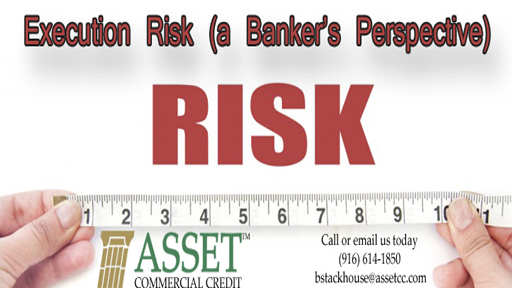We regularly talk to clients and prospects about their businesses, their opportunities, strengths and weaknesses. In the middle of the Coronavirus Pandemic the conversation has changed. We offer as much support as we can while creating a win-win scenario for our clients, their customers, our investors and of course our company. We thought that putting some of the information on a blog would be helpful. Management operating a business that is affected by the Pandemic should consider applying for an SBA Disaster Loan. The President has declared a Nationwide Disaster therefore disaster funds are available throughout the United States. Information is available on the SBA’s web site: https://disasterloan.sba.gov/ela/ As of Friday, 3-27-20 the Senate has approved the CARES Act. The house is expected to pass it today and the President is expected to sign it. For a copy of the details before the House of Representatives, click here. STOP THE PRESSES! In the middle of writing this blog the House passed it and the President signed it. It will be interesting to see if anything changed. YEA for government support. This act provides for individual and business support in many ways. Businesses that keep employees have access to a special program called The Paycheck Protection Program. That program allows businesses to borrow at low interest rates and long maturities. Certain expenses that the business pays during an eight-week period will qualify some or all of the loan to be forgiven. The biggest focus is on keeping employees on payroll. This is certainly something that businesses need to look into. Also, several counties have created programs to support businesses in their jurisdiction. One example is San Diego County (CA). Details of their program is available here https://www.sandiego.gov/SBRF Be sure to check with your county and also any State programs that develop. After discussing the above with a prospective client today, they asked, “Is there anything else we can do”. It’s a simple question that often has a complex answer. Not meaning to be wishy-washy it ultimately comes down to the identity of the company, their vision and what level of change management is willing to implement. Let’s start with the understanding that no one can be an expert in everything. That then leads me to management. Are the right leaders at the helm? Do they know their limitations? Are they willing to bring consultants to the table to support areas of weakness? Keep in mind that consultants have knowledge in their area but are not experts in everything too. An ethical consultant will not consult in areas where they do not have sufficient knowledge and experience to be valuable. My good friend Larry Mandelberg is a Change Mentor for Executives. He has developed a methodology to quickly center focus on the most serious issue that when resolved will fix a multitude of business symptoms. He calls it the Mandelberg Business Managers Realty Index (mBMRI). I’ve independently tested it and found it to be fully in sync with my observations in financing over 3,000 businesses in my career. So back to the question, is there anything else we can do? Some companies need to look at their mission and are they really in tune with accomplishing it. Some companies need to look at their values and are they really in tune with their decisions. Some companies need to look at the vision and is everyone focused on accomplishing it. Some companies need to look at their procedures and processes to see if they are appropriate. Some companies need to look at management, do they have the right people in place to accomplish their vision Some need to look at employee training, supervision, support and feedback systems. Some need to do better planning, whether broad plans or marketing plans. Some need to merge with other companies to get economy of scale. Some need to shrink because their market has shrunk or they overgrew the market. Some need to find investors, selling a piece of the business in order to correct capitalization issues. Some need a line of credit or term loan to properly leverage their capital. Some won’t qualify for traditional bank credit facilities so an SBA guarantied loan may make sense. Some need to factor their receivables thereby creating cash in the short term while they wait for additional relief. I could go on but I bet that you may have stopped reading the bullet points half way. Ultimately it is up to management to know where they are driving the business and how to get there. If you need a consultant contact the IMC (Institute of Management Consultants) for a specialist to help guide you through your path. https://www.imcusa.org/search/custom.asp?id=2065 Bob Stackhouse, President, Asset Commercial Credit © Bob Stackhouse – All rights reserved – March 2020
Execution Risk
Execution Risk is one of the lending decision topics that is deeply gray. Bankers have black and white scoring models for leverage ratios, cash flow and other measurable decision components. Properly evaluating the grey area of execution risk is more of an art form than statistical analysis. Let’s get the jargon out of the way first. Execution risk is the risk that a business will not be successful if they implement their plan, or that they can not successfully pull it off. Yes, some components of execution risk are embedded in the measurable lending criteria. Perhaps the business is too leveraged, or does not have adequate cash flow. One may look at non-traditional achievements to see part of my point. For instance if someone wants to climb Mt. Everest but does not have the equipment or conditioning, they will likely fail. If someone wants to play sports, but they are not trained in the nuances of the sport, the odds are against the person. The same holds true for businesses. Equipment, preparation, training, facilities and support are all likely components in a successful business plan. If someone is trying to launch or grow a business without proper equipment or the company is under capitalized, the banker’s decision process is pretty simple. Bankers decline the request and refer the business to a collateral lender, broker, consultant, accountant or investment banker. What if the business seems to have many or most of the core components in place? How does the banker measure planning, conditioning, knowledge, training, and staying power, among others? To help explain this grey area, I’ve taken eight examples from our five most recent credit applications. I’ve formatted them as rules to assist your loan application presentation. So, if you are guilty of any of these, fix them as soon as you can. If you need more help, consider hiring a business consultant to assist you. My biggest caution on business consultants is that some of them veer from your real plan, substituting their plan. Do not let this happen. It is good to be trained and coached, and then implement your plan, taking ownership and responsibility for the entire plan. If you need assistance in finding a good consultant, I am happy to point you in the right direction. Just drop me a line. Bob Stackhouse, President, Asset Commercial Credit© Bob Stackhouse


